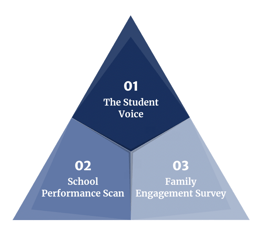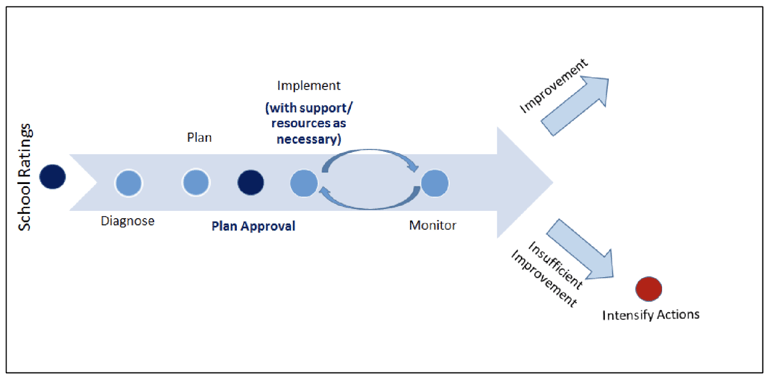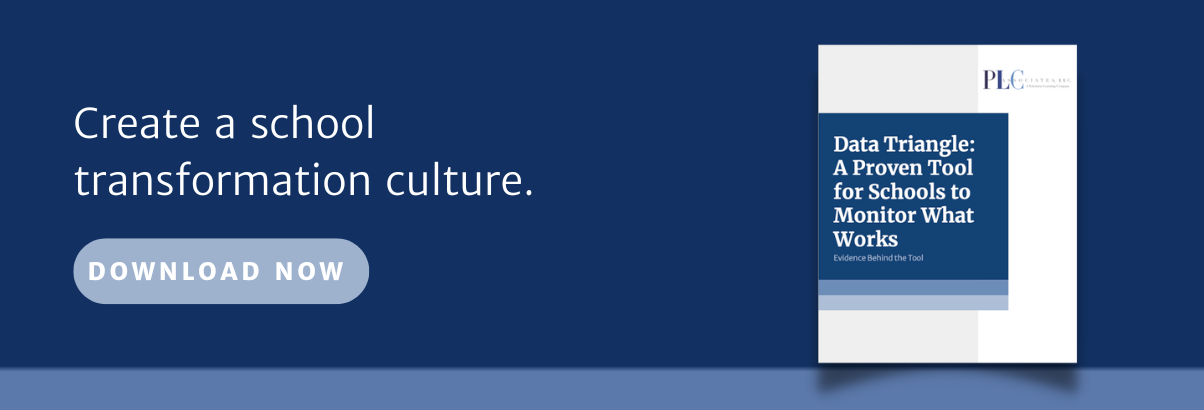Are you planning your school’s comprehensive education plan (SCEP) and finding the process overwhelming? Are you struggling with where to start and how to determine the commitments for the coming year? Do you have a sense of what students, teachers, and parents think about the school? For your SCEP to be successful, you will need to answer these questions comprehensively. I worked for the last several years with schools to craft effective SCEPs and have leveraged these experiences to develop several research-based suggestions for you.
Gather relevant information through a needs assessment.
 First, gather as much information as possible by carrying out a needs assessment. A needs assessment is a process of gathering information and data about your school’s strengths and areas for improvement. The goal of a needs assessment is to identify the specific needs of a school so that you can develop a comprehensive education plan to address those needs effectively. This information can be collected through surveys, interviews, focus groups, and other methods. PLC Associates’ Data Triangle Surveys are an effective tool to collect data on student achievement, teacher effectiveness, and school culture. And, PLC Associates’ Social-Emotional Developmental Health Survey will help you collect data on student social-emotional learning, another important aspect of a needs assessment, by gathering information on students’ ability to manage their emotions, build relationships, and make responsible decisions.
First, gather as much information as possible by carrying out a needs assessment. A needs assessment is a process of gathering information and data about your school’s strengths and areas for improvement. The goal of a needs assessment is to identify the specific needs of a school so that you can develop a comprehensive education plan to address those needs effectively. This information can be collected through surveys, interviews, focus groups, and other methods. PLC Associates’ Data Triangle Surveys are an effective tool to collect data on student achievement, teacher effectiveness, and school culture. And, PLC Associates’ Social-Emotional Developmental Health Survey will help you collect data on student social-emotional learning, another important aspect of a needs assessment, by gathering information on students’ ability to manage their emotions, build relationships, and make responsible decisions.
Develop SMART goals and objectives based on identified needs.
SMART stands for Specific, Measurable, Achievable, Relevant, and Time-bound. Specific goals are clear and well-defined. Measurable goals have a way to track progress against them, and achievable goals are realistic and attainable. Relevant goals align with the school’s overall mission and vision, and time-bound goals have a specific timeline for completion. As part of crafting your SCEP, develop SMART goals collaboratively with stakeholders, including teachers, students, parents, and community members so that you are all in alignment about the path forward.
Create strategies and action plans to achieve the goals and objectives.
Once you have determined your SMART goals and objectives, develop aligned strategies and action plans. These may involve implementing new curricula, providing professional development opportunities for teachers, leveraging technology to enhance student learning, or partnering with community organizations to provide additional resources. For instance, you can leverage technology to provide interactive learning experiences, remote learning, and digital assessments. The use of technology in classrooms can facilitate personalized learning and help students develop digital literacy skills. One tool PLC Associates offers is a comprehensive curriculum audit that helps school leaders identify learning gaps and align the curriculum to learning standards.
Establish a timeline for implementation and evaluation of the plan.
Create a realistic timeline, considering any potential roadblocks or setbacks that may arise. Conduct regular progress updates and assessments throughout the timeline to ensure the plan is on track. You can also engage in walkthroughs to evaluate how well the plan is being implemented and to provide feedback to teachers and staff.

Monitor and review the plan regularly to ensure its effectiveness.
This may involve collecting data on student performance, teacher satisfaction, and other relevant metrics. Based on this data, you may need to make plan adjustments to ensure it remains effective and relevant. Professional Learning Communities (PLCs), groups of educators who collaborate to improve their teaching practices and student learning outcomes, can be used to monitor progress and provide support to teachers. They can review student data, share successful teaching strategies, and develop solutions to problems that they encounter. PLC Associates offers a signature program that helps develop the effectiveness of your learning communities.
Continuously engage in the school improvement process.
As the year progresses, it is helpful to continuously revise and update the plan. Education is a constantly evolving field, and schools must be willing to adapt and change to meet the needs of their students. As new challenges and opportunities arise, schools should be prepared to adjust their SCEPs. Another key component to the successful implementation of your plan is effective communication. You can share the progress of the plan with stakeholders, including teachers, students, parents, and community members, through regular meetings, reports, and dashboards.
I have worked with many schools in developing their SCEPs, and several of these have been removed from the New York State Education Department (NYSED) list. I supported Mayfield Junior-Senior High School in 2020 and 2021, and PLC Associates is continuing to work with its school leaders to develop clear goals for improvement. It was recently announced that Mayfield is now off the NYSED accountability list. I invite you to contact me using the form below if you would like to learn more.
Accomplish Great Things in Your District
We work with you to close gaps, replicate best practices, and build high-impact, sustainable systems.
Let’s Chat About How We Can Help
Reach out to PLC Associates for a 15-minute solutions conversation.
Call us directly at 1-800-774-6801. We look forward to talking with you.

